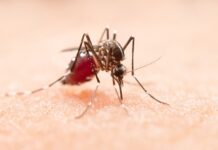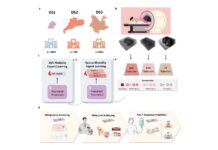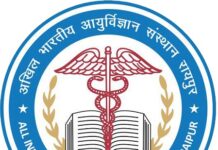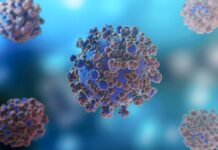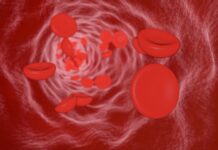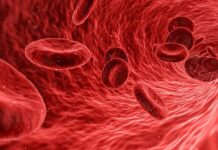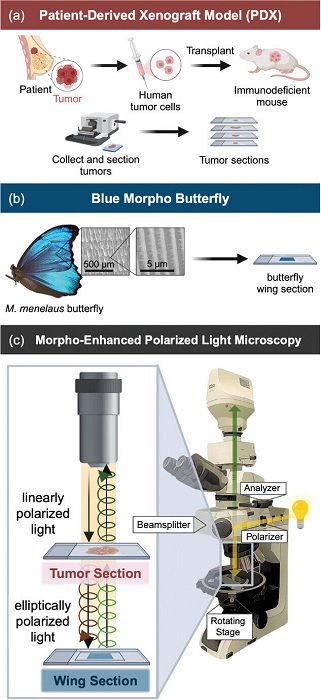Researchers Discover a New Ally in Cancer Diagnosis
Scientists at the University of California San Diego have found an unexpected partner in the fight against cancer: the Morpho butterfly. Known for its iridescent blue wings, this butterfly owes its brilliance not to pigments but to microscopic structures that manipulate light. Now, researchers are using these structures to improve the analysis of cancer biopsy samples, making diagnosis faster, more accurate, and more accessible—without relying on chemical stains or costly imaging equipment.
The study, published in Advanced Materials, demonstrates how this natural phenomenon can enhance fibrosis assessment, a crucial factor in cancer progression.
The Role of Fibrosis in Cancer Detection
Fibrosis, the accumulation of fibrous tissue, plays a significant role in diseases like neurodegenerative disorders, heart disease, and cancer. In oncology, measuring fibrosis levels in a biopsy sample helps determine whether cancer is in an early or advanced stage.
However, current clinical methods struggle to accurately distinguish between these stages. Traditional tissue staining techniques often produce subjective results, as different pathologists may interpret samples differently. More advanced imaging technologies exist but require expensive, specialized equipment that many clinics lack.
How the Morpho Butterfly Provides a Solution
To address these challenges, the research team developed an innovative approach using the Morpho butterfly wing. They placed a biopsy sample on the butterfly’s wing and examined it under a standard microscope. This allowed them to assess tumor structure without chemical stains or expensive imaging tools.
“We can apply this technique using standard optical microscopes already available in clinics,” said study senior author Lisa Poulikakos, a professor at UC San Diego’s Jacobs School of Engineering. “This method is not only more objective but also provides quantitative insights into tissue structure.”
From Nature to Laboratory: The Birth of an Idea
The idea for this novel technique came from Paula Kirya, a mechanical engineering graduate student at UC San Diego and the study’s lead author. Kirya had previously studied the optical properties of Morpho butterfly wings as an undergraduate at Pasadena City College. When she joined Poulikakos’ lab—where researchers create synthetic nanostructures for biological imaging—she saw an opportunity.
“I had been studying butterfly wings and how they react to different environments,” Kirya said. “When I joined this lab, I thought, ‘The Morpho already has these properties—why not use them?’”
Enhancing Light Interaction for Better Diagnosis
The team discovered that the microscopic structures of Morpho wings respond strongly to polarized light, which propagates in a specific direction. Collagen fibers, a major component of fibrotic tissue, also interact with polarized light, but their signals are weak. By placing a biopsy sample above a Morpho butterfly wing, the researchers amplified these signals, allowing them to analyze collagen fiber density and organization more easily.
As reported by MedicalXpress, the team aimed to quantify this effect. They developed a mathematical model based on Jones calculus, a method for analyzing polarized light. This model correlates light intensity with fiber density, providing an accurate metric for assessing fibrosis in tissue samples.
Promising Results in Breast Cancer Biopsies
Using this approach, researchers analyzed breast cancer biopsy samples provided by study collaborators Jing Yang, a professor at UC San Diego School of Medicine, and Aida Mestre-Farrera, a postdoctoral scientist in Yang’s group. Their findings matched results obtained through conventional staining techniques and advanced, high-cost imaging methods.
“We are expanding current procedures with a stain-free alternative that requires only a standard optical microscope and a Morpho butterfly wing,” Kirya explained.
A Path Toward Global Accessibility
Early cancer screening remains a challenge in many parts of the world due to limited resources. This technique offers a simpler, more cost-effective tool for diagnosing cancer in low-resource settings.
“By leveraging this natural solution, we can help more patients get diagnosed before their cancers reach aggressive stages,” Kirya added.
Future Applications Beyond Cancer
Although this study focused on breast cancer, researchers believe the technique could apply to a wide range of fibrotic diseases.
“We’re excited to explore this method for broader tissue diagnostics,” Poulikakos said. “It’s remarkable that nature has already provided us with a solution—our job is to harness it for medical advancements.”




